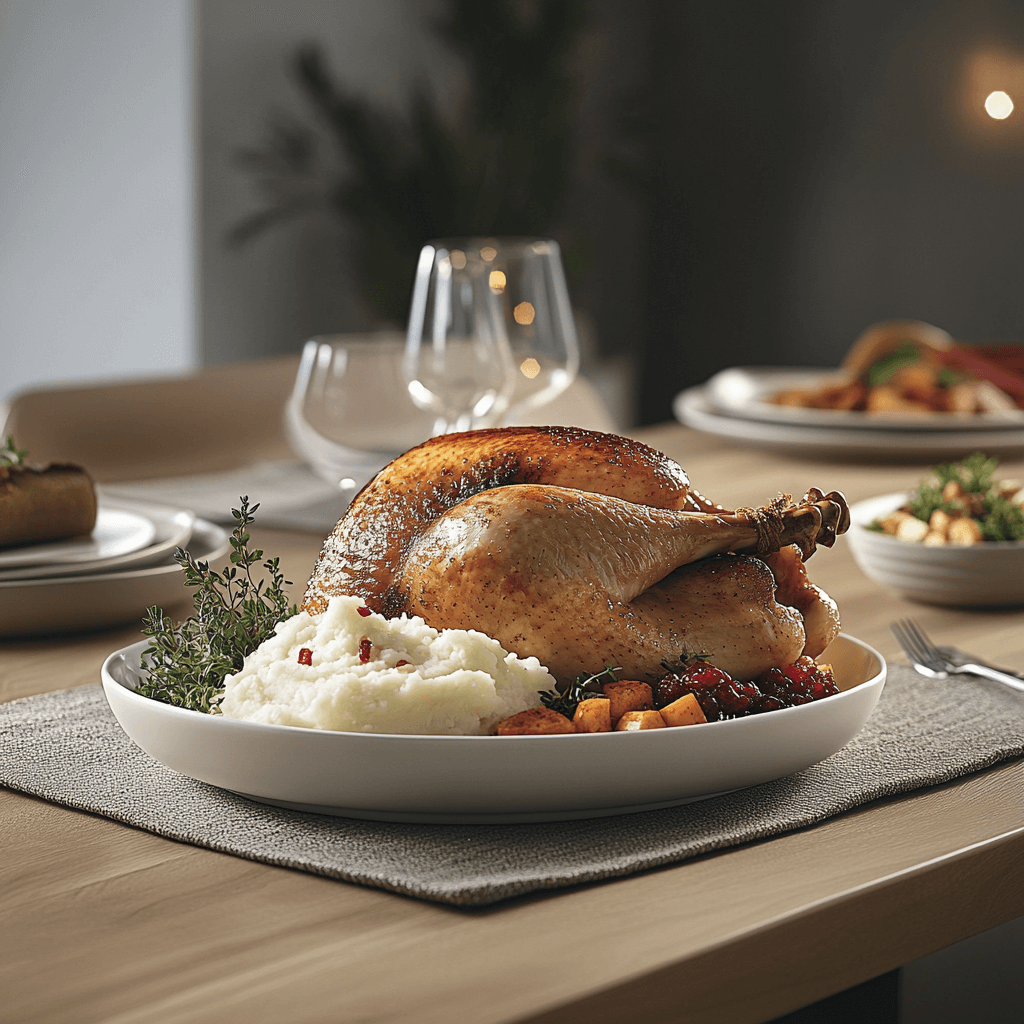Introduction to Gluten Free Turkey Gravy
When it comes to holiday meals, gravy is often the finishing touch that brings everything together. For those following a gluten-free diet, creating a delicious gluten free turkey gravy may seem challenging, but it doesn’t have to be. Traditional gravies use flour for thickening, yet a simple switch to cornstarch provides the same rich flavor and silky texture. With this recipe, you can achieve a gravy that’s both gluten-free and incredibly flavorful, perfect for those with dietary restrictions.
Why Choose Gluten Free Gravy? A Dietary Perspective
With the rise in awareness of gluten intolerances and celiac disease, more people than ever are turning to gluten-free options. It’s important for those with sensitivities to have delicious alternatives that allow them to participate fully in holiday meals. This gluten free turkey gravy is not only inclusive but also maintains the classic taste and richness that everyone loves.
The Role of Cornstarch: A Key Ingredient in Gluten Free Gravy
Cornstarch is a star ingredient in gluten free gravy, serving as an effective and gluten-free thickening agent. Unlike wheat flour, cornstarch provides a smooth, glossy finish without altering the flavor, making it ideal for gravy. Furthermore, it’s quick to thicken, meaning you can achieve the perfect consistency in a matter of minutes.
Advantages of Cornstarch Over Flour for Gluten Free Gravy
Cornstarch offers several advantages when compared to traditional flour. First, it has nearly twice the thickening power of flour, allowing you to use less while achieving a smooth texture. Additionally, cornstarch creates a translucent finish, whereas flour often leaves gravy looking cloudy. The neutral flavor of cornstarch also allows the natural turkey drippings to shine, making for a more flavorful dish.
Gathering Ingredients for Gluten Free Turkey Gravy
To make this simple, yet flavorful gluten free turkey gravy, you’ll need:
- 2 cups of turkey drippings or broth
- 2 tablespoons of cornstarch
- Salt and pepper, to taste
- Optional: fresh herbs like thyme or rosemary
- Optional: a splash of sherry or white wine for added depth
Preparing Turkey Drippings: The Essential Base
Once you’ve roasted your turkey, you’ll have rich drippings left in the pan. To prepare them, carefully pour the drippings into a measuring cup. Let them settle for a few minutes, then skim off any excess fat from the top. If you’re short on drippings, add some turkey or chicken broth to reach the desired amount.
How to Thicken Turkey Gravy with Cornstarch
When it comes to thickening your gravy, cornstarch is incredibly effective. Begin by dissolving two tablespoons of cornstarch in an equal amount of cold water, forming a slurry. Gradually pour this slurry into the hot turkey drippings while stirring constantly. Within moments, you’ll see the gravy thickening, taking on a beautiful, glossy sheen.
Consistency is Key: Achieving the Perfect Gravy Texture
It’s essential to achieve the right texture for your gravy. You want it thick enough to coat the back of a spoon, yet not too thick. If the gravy seems too thin, add a little more cornstarch slurry, stirring continuously. On the other hand, if it’s too thick, simply add a splash of broth or water to reach the desired consistency.
Enhancing Flavor with Herbs and Wine
To elevate your gluten free gravy, try adding fresh herbs or a splash of wine. Herbs like thyme, sage, or rosemary lend a subtle depth, while a touch of sherry or white wine adds richness. Freshly ground black pepper and a hint of garlic powder can also enhance the flavor, making the gravy even more delightful.
Avoiding Lumps: Tips for Smooth Cornstarch-Based Gravy
One common concern when working with cornstarch is lumps. However, this can be easily avoided by dissolving the cornstarch in cold water before adding it to the hot drippings. Stir constantly as you incorporate the slurry to ensure a smooth, lump-free texture. Adding dry cornstarch directly to the gravy is not recommended, as this can cause clumping.
Balancing Seasonings for Perfect Taste
Once your gravy has thickened, take a moment to taste and adjust the seasonings. Often, turkey drippings contain salt, so be cautious and add additional salt in small increments. A pinch of pepper can also enhance the flavor. Adjusting seasonings gradually ensures a perfectly balanced and flavorful gravy.
Common Mistakes to Avoid in Gluten Free Gravy Preparation
Several common mistakes can affect the quality of your gluten free gravy. Avoid over-thickening by adding cornstarch slowly, and refrain from boiling the gravy after thickening, as this can break down the cornstarch. Additionally, always dissolve cornstarch in water before adding it to hot liquid, which helps prevent lumps.
Exploring Variations: Adding a Twist to Your Gravy
Once you master the basics, you can experiment with different variations to suit your taste. Consider adding mushroom or onion stock for a deeper, richer flavor. For a slightly tangy twist, a splash of balsamic vinegar can enhance the gravy’s complexity. Alternatively, a teaspoon of honey or maple syrup adds a subtle sweetness for those who prefer a hint of contrast.
Serving Suggestions: Pairing Your Gravy with Holiday Dishes
Gluten free turkey gravy is versatile and pairs well with many holiday dishes. Drizzle it over roasted turkey, mashed potatoes, or stuffing to enhance their flavors. It also complements roasted vegetables such as carrots and Brussels sprouts, making it an ideal addition to any holiday spread.
Storing and Reheating Gluten Free Gravy
If you have leftover gravy, store it in an airtight container in the refrigerator for up to three days. To reheat, place it over low heat, stirring occasionally. Add a bit of broth or water to restore the desired consistency, as it may thicken in the fridge.
Frequently Asked Questions About Gluten Free Turkey Gravy
Can I make gluten free turkey gravy in advance?
Absolutely! You can prepare the gravy a day in advance. Reheat it gently and add a little broth if it’s too thick.
What if I don’t have turkey drippings?
Simply use chicken or turkey broth as a base; the result will still be delicious.
Is cornstarch the only gluten free thickener?
While cornstarch is preferred, you can also use arrowroot powder or tapioca starch, though they may slightly alter the texture.
Conclusion: Enjoy a Delicious Gluten Free Holiday Meal
This gluten free turkey gravy recipe allows everyone at the table to enjoy a delicious, worry-free holiday meal. Simple to make yet rich in flavor, it’s a heartwarming addition that brings out the best in holiday dishes. Embrace the season with this gluten free gravy that ensures everyone can enjoy the feast to the fullest.

